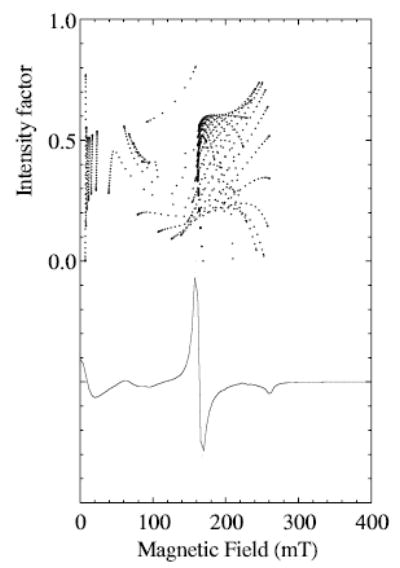Fig. 6.

Dependence of the intensity factor [12] on magnetic field for the 3 → 5 transition of Se = 5/2 (upper) is compared with the derivative EPR spectrum calculated for this transition (lower) for a calculation with D and E = 0.08 and 0.015 cm−1, respectively, and microwave frequency of 9.26 GHz. The intensity factor was calculated with Eq. (2) (see text). A dot is shown for the intensity factor at each pair of θ and φ angles calculated every 3° in the range 0 to 90° for both angles (according to Eq. (1), the x-axis corresponds to θ = 90°, φ = 0° and the y-axis to θ = 90°, φ = 90°). A frequency-swept Lorentzian line width of 300 MHz was used to calculate the spectrum and the magnetic field was partitioned into 1 mT bins.
